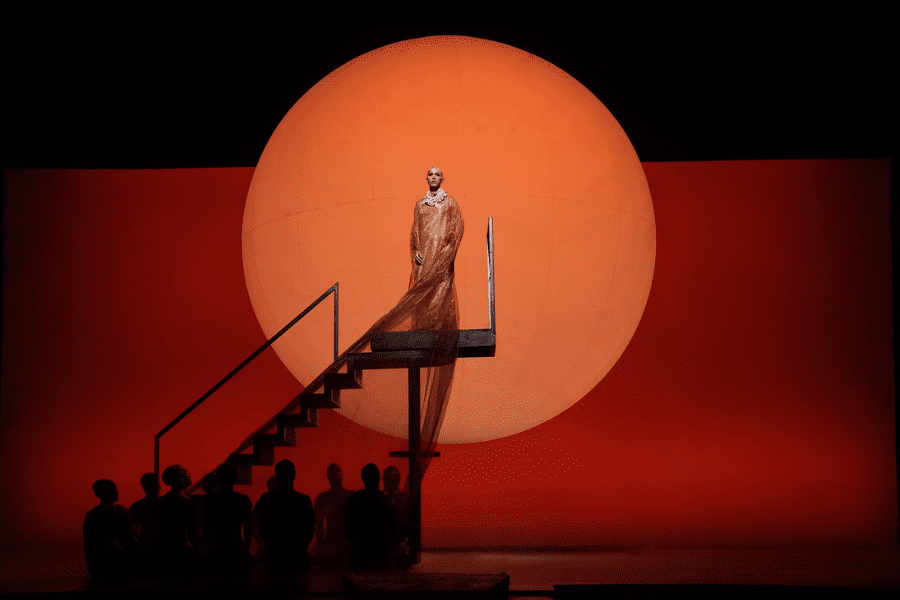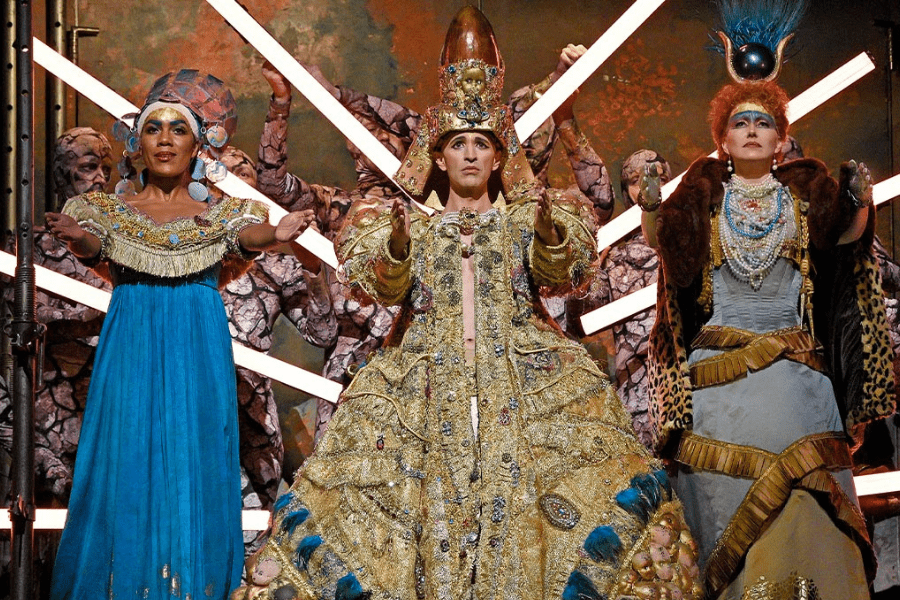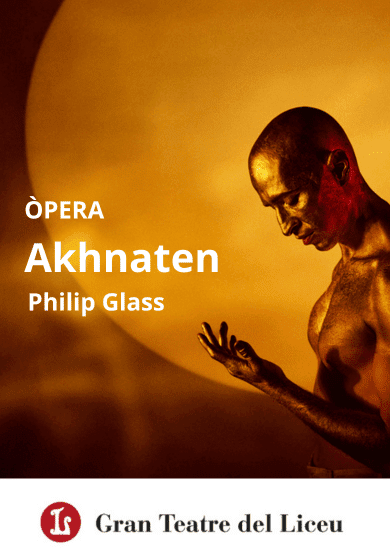
A pharaoh against the gods (and against the opera)
Akhnaten,,,,,, Philip Glassfor the first time arrives at the Liceu as an opera-riot that overflows the conventional narrative. The story of Pharaoh becomes a sensory and out of time, where hypnotic music and stage -filled symbols make up a sacred space.

More than a representation, is a stage invocation
With Akhnaten (1983), Philip Glass (Baltimore, 1937) culminates in its so -called Trilogy of portraitsdedicated to figures who have reconfigured spirituality and perceptionEinstein on the Beach (1976) and Satyagraha (1980). This is not a biographical dramatization, but the construction of a stage liturgy. The Liceu now welcomes this sound object as what is essentially: a ceremony that operates on the senses.
In the fourteenth century BC, Akhenaton abolished traditional Egyptian polytheism to establish exclusive worship in Aton, the solar disc, high as the only legitimate divinity of its reign. Beyond its political role, Pharaoh is presented as a figure to limit: an intermediary between the divine and the human, between the visibility and the veil of the mystery. This ambivalence is the one that Glass invokes stage, rejecting the narrative structure and replacing it with a flow of ritual images, intoned in dead languages-Ancient Egyptian, Acadi, Biblical Hebrew-and absent of recitatives or translations.
Glass music, of minimalist aesthetics and hypnotic character, eliminates the violins and generates a dense, severe, high -timbre sound tissue. Repetition is not understood as redundancy, but as a spiritual construction strategy: a sound architecture that suspends temporary perception. The opera thus becomes a sound ritual, closer to contemplation than in the narrative.
The three acts relate the rise of Akhenaton to power, the consolidation of its theological regime and its subsequent decay. Her Coronation It is a highlight of stage minimalism, while the end – with a tourist guide voice that comments on Amarna’s ruins – introduces a device of ironic distance that activates a metahistoric layer.

Anthony Roth Costanzo It offers a vocal and body incarnation of the Pharaoh, in an interpretation that combines ether and authority. Rihab chaieb It gives Nefertiti a dense and elegant presence. The stage direction of Phelim McDermott Build a performative space where symbol, movement and light establish a permanent dialectic. The costume design of Kevin Pollardtogether with the visual action of the contemporary circus company Gandini Jugglingmake each scene a visual rite. In the musical direction, Karen Kamensek “Specialist in contemporary repertoire,” articulates the orchestra with rigor and spirituality.
Akhnaten It is not offered as a show, but as an offering. Its power is not in what it explains, but in what it exposes. At the Liceu, the stage becomes altar and the audience, witnessing a liturgy without redemption.
More information, pictures and entries:








